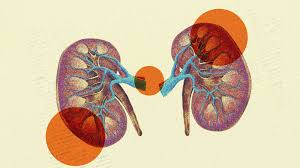Throat cancer generally refers to cancer that develops at the throat (pharynx) or voice box (larynx).
The muscular tube that runs from behind your nose to your neck is called the throat. The flat cells that line the interior of your neck are where most throat cancers develop.
Your voice box is located directly below your throat and is similarly vulnerable to throat cancer.
The vocal cords vibrate to produce sound when you speak. The vocal cords are housed in the voice box and formed at the cartilage.
One common factor of medicine is that several disorders have similar symptoms; one must be very careful of which symptoms depicts a disease
A simple sore throat or cough is typically not a cause for concern. Most times they go away on their own. However, they can be signs of something more dangerous, such as throat cancer.
Cancers of the throat develop in the organs that allow you to swallow, talk, and breathe.
Approximately half of this throat cancer begins in the “pharynx.” The rest begin in the voice box, often known as the “larynx.”
These infections spread swiftly and it is encouraged to start an early treatment. Early treatment of throat cancer provides you with the best chance of beating them and maintaining a high quality of life.
What are the Types of Throat Cancer
Though most throat cancers contain the same types of cells, particular words are used to distinguish the location of cancer in the neck.
-
Nasopharyngeal cancer

Nasopharyngeal cancer starts in the nasopharynx, which is the area of your throat directly below your nose.
-
Oropharyngeal cancer

Oropharyngeal cancer starts in the oropharynx, which is the area of your throat just behind your mouth that contains your tonsils.
-
The hypopharynx (laryngopharynx)

The hypopharynx starts at the lower portion of your throat, before your oesophagus and windpipe.
-
Glottic cancer
Glottic cancer develops in the vocal cords.
-
Supraglottic cancer
Supraglottic cancer develops in the top section of the voice box. It involves cancer of the epiglottis, a piece of cartilage that prevents food from entering your windpipe.
-
Subglottic cancer
Subglottic cancer develops in the lowest part of your voice box, beneath your vocal cords.
What Are the Signs and Symptoms of Throat Cancer
- Voice changes such as cracking, hoarseness, or difficulty speaking clearly
- Having difficulty swallowing or breathing
- Sensation of something stuck in your throat.
- Sore throat, cough (perhaps with blood), or persistent earache
- Headache
- Ear or neck pain
- A lump or pain in the neck that does not go away
- Weight loss
Can you cure throat cancer?
This cancer has a 5-year survival rate of 76%. The 5-year survival rate is 83% if the disease is solely found in the larynx (localized cancer).
Also read What to know about breast cancer If cancer spreads to nearby tissues, organs, or regional lymph nodes, the 5-year survival rate reduces to 49%.
What are common treatments for throat cancer
Surgery
The tumor and any malignant tissue will be removed by a surgeon. The form and function of the voice box, the epiglottis, and other structures may be affected.
Laser surgery
This may be an option in the early stages.
Radiation therapy
Targeted amounts of radiation aim to eliminate cancer cells.
Chemotherapy
Chemotherapy is a type of treatment in which drugs is use to target and destroy cancer cells.
Targeted therapy
Targeted therapy is a type of cancer treatment that targets specific cancer cells or proteins that influence cancer progression.
By targeting certain cells rather than healthy ones, this sort of therapy hopes to limit the likelihood of side effects.
Immunotherapy
Immunotherapy is a novel treatment that strengthens the immune system’s ability to fight cancer.








